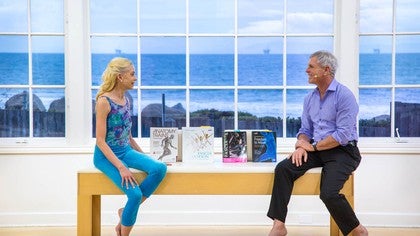Interoception in Movement
Elizabeth L. & Tom M.
Workshop 3708
Watch this Workshop

Monika Z
1 person
likes this.
Loved the workshop theory and practical aspect!! That little wunda chair adaptation is deceptively hard lol.. something to work on. Many thanks for your collaboration.
2 years ago
love the workshop theory! I purchased the workshop yesterday but have no access to wunda chair or reformer, any tips of how to adapt all those wonderful movements at home, on a mat?
2 years ago
Senada, please tell me what props you have. I will make recommendations.
2 years ago
I also loved the workshop - here here to 2 great minds! I'm playing with that last sequence.. the 6 spring set up... I find it quite challenging.. also trying to guess what colours of springs mean what - I assumed "leg springs" for the pelvis, long "arm" springs for thx, and short arm springs for hands? What I'm finding is that to stay it is really about sitting into my pelvis.. is that the idea? In which case am I right in saying the springs help to highlight those minute (or large) movements that we might call a "hip or shldr hike" ? Or a tuck, or thx flxn / extn when not necc? I'm keen to try it on clients.. but I'm trying to imagine putting my clients who have knee / hip pathologies in there and the trust / attention they will require for this.. love to hear how people make this work in the studio. Thanks
1 year ago
Tahmour, thank you for engaging with our workshop. The slings that support the sacrum and the thoracolumbar junction at T11/T12/L1 give proprioceptive information and decrease the stress of full weight bearing in standing. I suggest you start all your clients seated on a large physio ball (55-65 cm). Seated on the ball, each client will become familiar with the support of the slings and the arm springs. Progress to standing . The strongest long springs support the sacrum. The long medium springs support the lower thorax. The shorter or lighter springs are held in the hands. I developed a comprehensive curriculum called' Springs and Slings' taught at the end of the trapeze table or a wall unit or a Gyrotonic Tower. The entire curriculum is a workshop on PilatesFusion Edu.
1 year ago
11-15 of 15
You need to be a subscriber to post a comment.
Please Log In or Create an Account to start your free trial.














